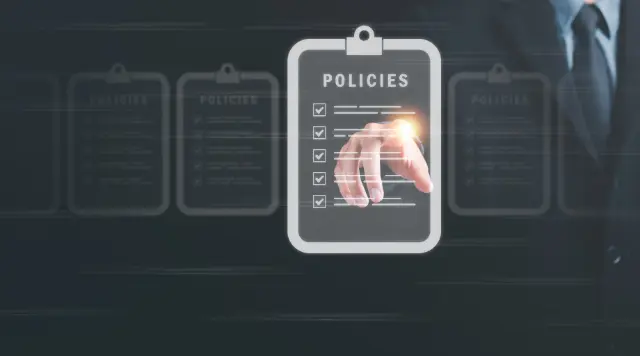Empowering the Insurance Industry with Intelligent Compliance Reporting Automation
In the highly regulated insurance industry, compliance reporting can be a daunting and time-consuming task. The sheer volume of data that needs to be collected, analyzed, and reported can overwhelm even the most diligent teams.
Introducing Python-Powered Compliance Reporting Automation
To address this challenge, insurance companies are increasingly turning to Python-based compliance reporting automation. This approach leverages the power of cloud computing, artificial intelligence (AI), and Python’s robust data analysis capabilities to streamline the entire process.
Harnessing the Benefits of Compliance Reporting Automation
By automating compliance reporting, insurance companies can:
- Enhance Efficiency: Automate repetitive tasks, freeing up valuable time for more strategic initiatives.
- Improve Accuracy: Eliminate human error, ensuring that reports are accurate and complete.
- Ensure Timely Submission: Avoid costly penalties and reputational damage by ensuring timely submission of reports.

Python, AI, and the Cloud: A Powerhouse for Compliance Reporting Automation
Unveiling the Potential of Unattended Bots
Python excels in developing unattended bots that can automate repetitive and time-consuming tasks in compliance reporting. These bots can be programmed to:
- Collect data: Extract relevant data from various sources, including internal systems, third-party databases, and unstructured documents.
- Analyze data: Perform complex data analysis to identify trends, patterns, and anomalies that may indicate compliance risks.
- Generate reports: Create comprehensive compliance reports that meet regulatory requirements and can be easily shared with stakeholders.
Empowering Attended Bots with Python
Attended bots, when built with Python, offer a higher level of customization and can assist human workers in completing compliance reporting tasks. These bots can:
- Provide real-time guidance: Offer step-by-step instructions to users, ensuring that they follow the correct procedures and avoid errors.
- Automate data entry: Fill in data fields automatically, reducing the risk of manual errors and saving time.
- Flag potential issues: Identify and highlight potential compliance risks or inconsistencies in real time, allowing users to take immediate corrective action.
Cloud Platforms: The Ultimate Orchestrators
Cloud platforms offer a comprehensive suite of features and capabilities that far surpass traditional RPA/workflow tools. These platforms provide:
- Scalability: Handle large volumes of data and complex automation tasks without compromising performance.
- Reliability: Ensure high availability and uptime, minimizing disruptions to compliance reporting processes.
- Security: Implement robust security measures to protect sensitive data and comply with industry regulations.
AI: Enhancing Accuracy and Efficiency
AI techniques, such as image recognition, natural language processing (NLP), and generative AI, can significantly enhance the accuracy and efficiency of compliance reporting automation. These techniques can:
- Extract data from unstructured documents: Process scanned documents, emails, and other unstructured content to extract relevant data automatically.
- Identify and classify documents: Categorize documents based on their content, ensuring that they are routed to the appropriate teams for review and processing.
- Generate natural language reports: Create human-readable compliance reports that are easy to understand and actionable.

Building a Robust Compliance Reporting Automation with Python and Cloud
Step 1: Process Analysis and Automation Design
Begin by thoroughly analyzing the compliance reporting process and identifying the sub-processes that can be automated. This includes:
- Data collection: Determine the sources of data and the methods for extracting and aggregating it.
- Data analysis: Define the rules and algorithms for analyzing data to identify compliance risks and trends.
- Report generation: Establish the format and content of the compliance reports to be generated.
Step 2: Python Script Development
Use Python to develop scripts that automate each sub-process. Python’s powerful data analysis capabilities and extensive libraries make it ideal for:
- Data extraction: Utilize libraries like BeautifulSoup and Pandas to extract data from various sources.
- Data analysis: Employ NumPy and SciPy for numerical and statistical analysis, as well as machine learning techniques for risk identification.
- Report generation: Create comprehensive reports using Python’s built-in reporting modules or third-party libraries like Jinja2.
Step 3: Cloud Deployment and Orchestration
Deploy the Python scripts to a cloud platform like AWS or Azure. Cloud platforms provide:
- Scalability: Handle large data volumes and complex automation tasks without performance degradation.
- Reliability: Ensure high availability and uptime, minimizing disruptions to compliance reporting.
- Security: Implement robust security measures to protect sensitive data and comply with industry regulations.
Data Security and Compliance
Data security and compliance are paramount in the insurance industry. Python and cloud platforms offer robust security features to protect sensitive data throughout the automation process.
Advantages of Python over No-Code RPA/Workflow Tools
Python offers several advantages over no-code RPA/workflow tools for compliance reporting automation:
- Flexibility and Customization: Python allows for greater flexibility and customization, enabling the development of tailored solutions that meet specific business requirements.
- Data Analysis Capabilities: Python’s powerful data analysis capabilities enable more sophisticated analysis and risk identification compared to limited capabilities in no-code tools.
- Integration with Cloud Platforms: Python integrates seamlessly with cloud platforms, leveraging their scalability, reliability, and security features.
Algorythum’s Differentiated Approach
Algorythum takes a different approach to BPA by recognizing the limitations of off-the-shelf automation platforms. Our Python-based solutions provide:
- Tailor-made Solutions: Custom-built automations that align precisely with your compliance reporting needs.
- Enhanced Performance: Python’s efficiency and cloud scalability ensure optimal performance and timely reporting.
- Data Security and Compliance: Robust security measures and adherence to industry regulations protect sensitive data throughout the automation process.

The Future of Compliance Reporting Automation
The convergence of Python, AI, and cloud technologies is unlocking new possibilities for compliance reporting automation. Future enhancements to the proposed solution include:
- Cognitive Automation: Incorporating AI techniques like natural language understanding (NLU) and machine learning (ML) to automate complex decision-making tasks and improve risk identification.
- Real-Time Monitoring: Establishing real-time monitoring systems to proactively identify and address compliance risks as they arise.
- Predictive Analytics: Leveraging AI to predict future compliance trends and risks, enabling proactive measures to mitigate potential issues.
Subscribe to Algorythum
Subscribe to our newsletter to stay updated on the latest advancements in compliance reporting automation and other industry-specific automation solutions.
Contact Us
Contact our team today for a free feasibility assessment and cost estimate for your custom compliance reporting automation requirements. Let us help you streamline your compliance processes, improve accuracy, and ensure timely submission.

Algorythum – Your Partner in Automations and Beyond
At Algorythum, we specialize in crafting custom RPA solutions with Python, specifically tailored to your industry. We break free from the limitations of off-the-shelf tools, offering:
- A team of Automation & DevSecOps Experts: Deeply experienced in building scalable and efficient automation solutions for various businesses in all industries.
- Reduced Automation Maintenance Costs: Our code is clear, maintainable, and minimizes future upkeep expenses (up to 90% reduction compared to platforms).
- Future-Proof Solutions: You own the code, ensuring flexibility and adaptability as your processes and regulations evolve.









